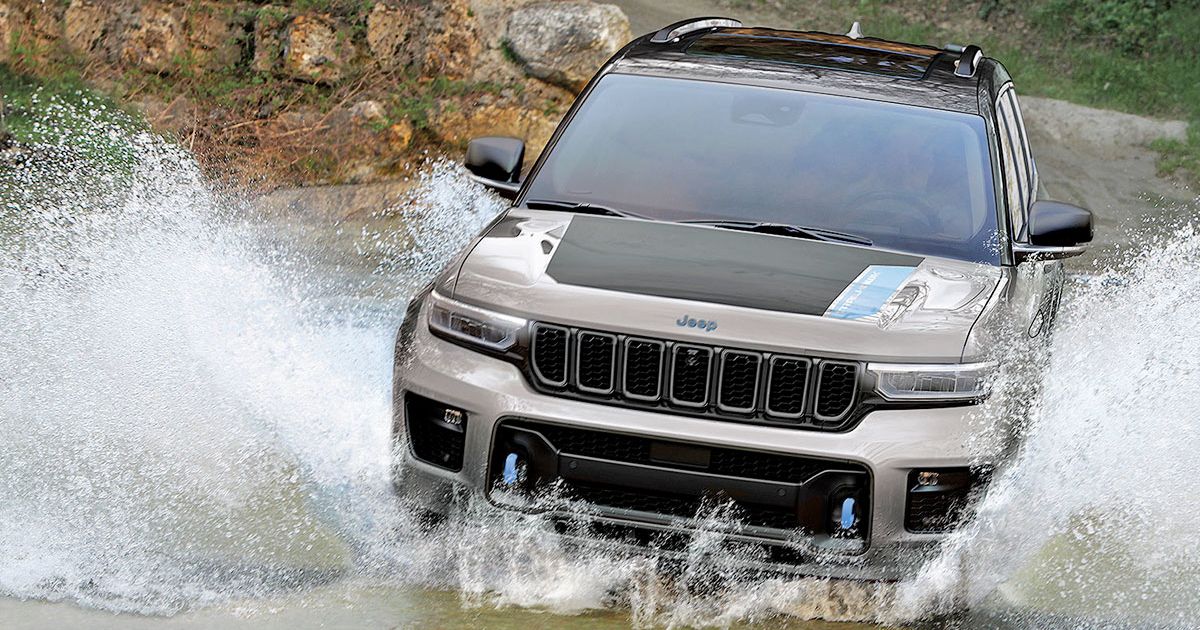
Jeep’s off-road contingent can take quiet excursions into the wilderness these days with the brand’s plug-in hybrid 4xe models. For limited distances, at least.
The Grand Cherokee 4xe can get up to 25 miles of electric range, while the plug-in Wrangler offers 21. This capability represents a steppingstone to the next phase of electrification for the SUV brand.
But Jeep’s electric vision goes much further. Its eyes are set on delivering purely electric jaunts along the 22-mile Rubicon Trail without using an ounce of gasoline while still having considerable range left at the end of the journey.
“Our perspective is you’re going to be able to do the Rubicon Trail and have another 100 miles at the end of the Rubicon to go to a charging station,” said Jeep CEO Christian Meunier. “That’s what we need to be able to do, and I think we can do it with a BEV.”
The era of zero-emission capability is coming quickly for Jeep. An all-electric lineup will arrive soon in Europe, but it’s less clear when Jeep will move away from gasoline engines and make that transition in the U.S., its most important market.
Meunier said Jeep plans to stop selling internal combustion vehicles in most major European markets at the end of the year and offer only hybrids as parent company Stellantis looks for battery-electric vehicles to make up all of its sales in Europe by 2030. Progress has been slower in the U.S. for electric models, but Meunier sees momentum building while Jeep’s 4xe tech paves the way for the EVs due out starting in 2023.
Plus, he sees a commitment to eco-friendly vehicles from the U.S. government, which has allotted billions of dollars toward installing 500,000 charging stations across the country. The Biden administration said the standards for these chargers “will ensure everyone can use the network — no matter what car you drive or which state you charge in.”
And if the off-road crowd needs a boost before hitting the trail, they might get a helping hand from one of the Jeep-branded charging stations that began popping up near select trails last year.
At the same time, Meunier has concerns about the toll the growing number of EVs could take on power grids.
The plan is for EVs to make up half of Stellantis sales in North America by the end of the decade. It’s a number that Meunier isn’t sure the region could support today. The Biden administration, likewise, wants half of new vehicles sold in the U.S. to be zero emission by 2030.
Jeep’s move to electrification is “happening really fast with our vision to zero emission freedom, which is really our guiding principle for the brand,” Meunier said this month. “We’re now in the middle of a big transformation that will shape our brand in the next 20 years.”
The prospect of an all-EV Jeep lineup in the U.S. through a 2022 lens may seem daunting, but this reality could look more achievable down the line as the country develops a more expansive charging network, said Jessica Caldwell, Edmunds’ executive director of insights.
Caldwell said Jeep will have to maintain its “go anywhere” spirit with its EVs. She thinks it’s possible Jeep could offer varying ranges on models depending on the preferred usage. Those who will do most of their driving in urban environments may not need the same range as a trail enthusiast.
“That unique selling point for Jeep is the go-anywhere, do-anything type of imagery, which an EV at this point in time sometimes can be quite limiting depending on where you are,” Caldwell said. “But I think as we transition and more infrastructure is built out and charging becomes easier, even just available more in different places, I think that’s when we will start to see a different world where it is possible to go off-road at places like Yellowstone or Yosemite or Moab.”
Matt Degen, editor of Kelley Blue Book, said the positive response to the 4xe vehicles could be an early sign of strong demand for Jeep’s electric options. He believes the burgeoning collection of chargers near trailheads could turn into gathering spots for the Jeep community as they replenish their batteries.
Degen tackled the Rubicon a decade ago in a Wrangler and remembers it taking hours to go just seven miles on the rocky terrain. Many trails aren’t very long, Degen said, so the range issue wouldn’t always come into play.
The Grand Cherokee Trailhawk 4xe already has completed the Rubicon using only battery power.
“As far as the range is concerned, you just obviously need a lot of power to go up and over these huge boulders and what not, and that’s what electric motors provide, so in that sense, I think it could work,” Degen said. “Especially if you have some charging points along the way, maybe at the start of the trail, at the end of the trail. That can work out for them. It’s not like you’re going across the Sahara here.”